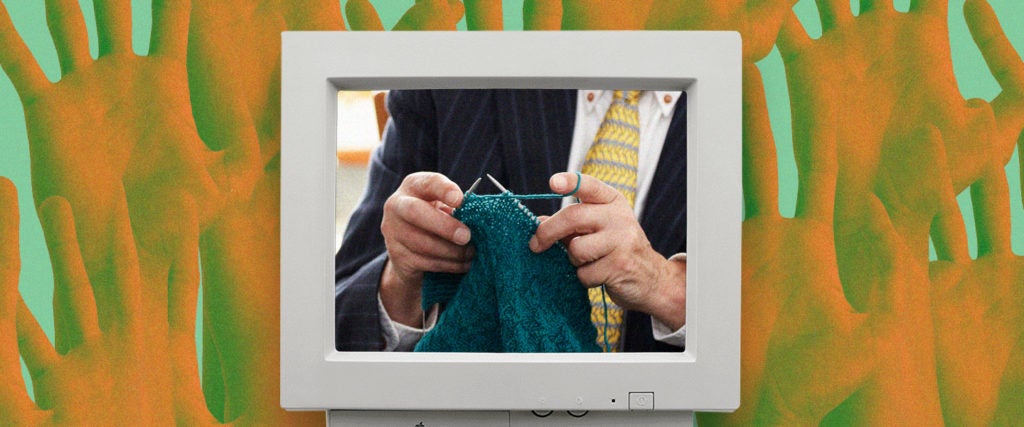I was working in an office at the beginning of 2020 until, uh, the pandemic. My coworkers and I spent a lot of time bemoaning the lack of flexibility at work, sharing a desire to work from home or to have a four-day work week, imagining conditions more akin to the Netherlands or Finland, countries that place more value on work-life balance.
Given COVID, we got a taste of our wish by working from home literally all the time. The positives are obvious — Pets! Couches!! No pants!!! — while the cons were surprising, like video calls from 8 a.m. through 7 p.m., work weeks that spanned several weeks without weekends, and a completely nonexistent work-life balance.
After a few weeks of this, I realized most of my meetings were for show, requiring physical, on-camera presence to listen and watch but not always participate. In an eternity of meetings that should have been emails, I felt deeply anti-productive, ending my days with no tangible results and a head swimming with frustrations and pent-up energy, yet overwhelming exhaustion.
What’s one to do?
If I were highfalutin dumbass Jeffrey Toobin, I would have used this as an opportunity to jerk off in front of all my coworkers in a meeting and get my ass justifiably fired. But is doing the hashtag Zoom meat challenge a good idea? Absolutely not. So what should I do to stay stimulated while in boring Zooms?
My own answer was sewing. I put patches on clothes, adding bits and bobs to pillows, all while under my desk, out of sight of my computer camera, escaping pandemic panopticism. Basically, I started indulging in something I called a below-Zoom hobby, an activity where you actually make something of your time, a clear salve to our video demanding work-life imbalances. These are things like coloring or needlepoint, clay construction or knitting, origami or paper jeweling: Activities that are small and require little, but keep you creatively engaged while not demanding too much of your attention.
James C. Kaufman, who studies creativity in his role as a professor of educational psychology at the Neag School of Education at the University of Connecticut, finds that below-Zoom hobbies are a solution for needless video conferencing. “If you’re in those types of meetings where you’re expected to be there but not participate, it’s like you’re staring at a wall or watching a commercial for eight hours,” Kaufman said. “In the old days, when it was conference calls, you could get away with [a hobby]. Today, you have to keep your camera on.”
Kaufman, too, suggests an activity like sewing because others on Zoom can’t quite tell what you’re doing off-camera and you’re able to both pay attention and escape. He cautions against doing something that’s a little too same-same to your meeting — trying to write while listening, for example — because you’ll do poorly at both due to their similarities. Moreover, an activity like learning to cook or playing a new console game — hobbies that require a lot of attention — aren’t ideal because they’re so intellectually demanding. “If you’re trying to challenge yourself, that’s going to take your full brain,” Kaufman said. The difference is playing a phone game, one that’s largely mindless tapping, versus a PlayStation or Switch game, which require more hand-eye coordination: If you’re using roughly 80 percent of your attention on an activity, this is no longer a side-action but a full-on distraction.
What you need to be cognizant of is extreme multitasking, which Kevin Madore, an NIH Postdoctoral Fellow at Stanford University’s Department of Psychology, who has been studying the effects of media multitasking, warns against. Media multitasking is “the number of media that individuals simultaneously engage in,” like texting while watching television or video games while Zooming. The findings here had a lot to do with memory lapses and making errors. “Our brains aren’t evolved to handle simultaneous streams of information at the same time,” Madore explains. “One could argue that a pro of multitasking with media is that it helps us to feel distracted or gives some respite from whatever task we’re supposed to be working on, but whether that is a pro or not depends on interpretation.”
Madore notes the problem is switching costs. “When we switch information channels or switch doing different tasks, we often become more inefficient thinkers and problem solvers,” he says. Multitasking as such can result in more errors and taking longer in general to get something done. Ultimately, Madore doesn’t recommend media multitasking, highlighting how simultaneous media distractions aren’t great for the mind.
One thing that everyone can agree on, though? Getting off Zoom. Turn a meeting into a phone call and go for a walk, both Kaufman and Madore suggest. “There is some research showing that walking can lead to more creative problem solving than staying seated,” Madore says. “This may be because the motor activity involved in walking isn’t interfering with the information-processing activity from creative problem solving.” Madore, like Kaufman, suggests these findings might also be true for below-Zoom activities like sewing and knitting, too.
In this economy, having a hobby is a great thing because they keep us intellectually engaged, and sometimes a distraction is needed. Off of Zoom, if you want to write or cook or create in a bigger way, Kaufman always sees a benefit. “If you’re doing little things to make you happy, that’s great,” he says. But Kaufman warns against the (Americanized, capitalistic) pressure to use a hobby for something more than a hobby. “You don’t need to write the great American novel,” he says.
That I will not — nor will I sew the great American quilt.

